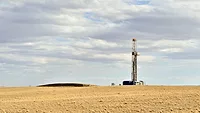USGS Boosts Oil and Gas Estimates In Bakken, Three Forks
“These world-class formations contain even more energy resource potential than previously understood, which is important information as we continue to reduce our nation’s dependence on foreign sources of oil,” said Secretary of the Interior Sally Jewell. “We must develop our domestic energy resources armed with the best available science, and this unbiased, objective information will help private, nonprofit and government decision makers at all levels make informed decisions about the responsible development of these resources.”
The assessment found estimated mean oil resources of 3.65 billion barrels in the Bakken and 3.73 billion barrels in the Three Forks.
“The USGS undertook this assessment of the Bakken and Three Forks Formations as part of a nationwide project assessing U.S. petroleum basins using standardized methodology and protocol,” said Suzette Kimball, acting director of the USGS. “Through this improved understanding of our energy resources, government, industry, and citizens are better able to understand our domestic energy mix and make wiser decisions for the future.”
Since an earlier 2008 USGS assessment, more than 4,000 wells have been drilled in the Williston Basin, giving a broader view of subsurface geology. Previously, scant data on the Three Forks Formation led researchers to believe it was unproductive. New drilling has helped clarify the reservoir’s full potential.
These two formations are also estimated to contain a mean of 6.7 trillion cubic feet of undiscovered, technically recoverable natural gas and 0.53 billion barrels of undiscovered, technically recoverable natural gas liquids. That estimate is a threefold increase for both resources since the 2008 assessment.
The USGS assessment was aided by data from the North Dakota Geological Survey, the North Dakota Industrial Commission, the Montana Board of Oil and Gas, and industry groups throughout the region.
For more information about USGS energy assessments, visit the agency’s Energy Resources Program website at http://energy.usgs.gov.
Looking for a reprint of this article?
From high-res PDFs to custom plaques, order your copy today!




